I recently scored this Midcentury beauty on a local Facebook garage sale site. I use the term “beauty” loosely…I’m a big fan of midcentury, but laminate? Not so much.
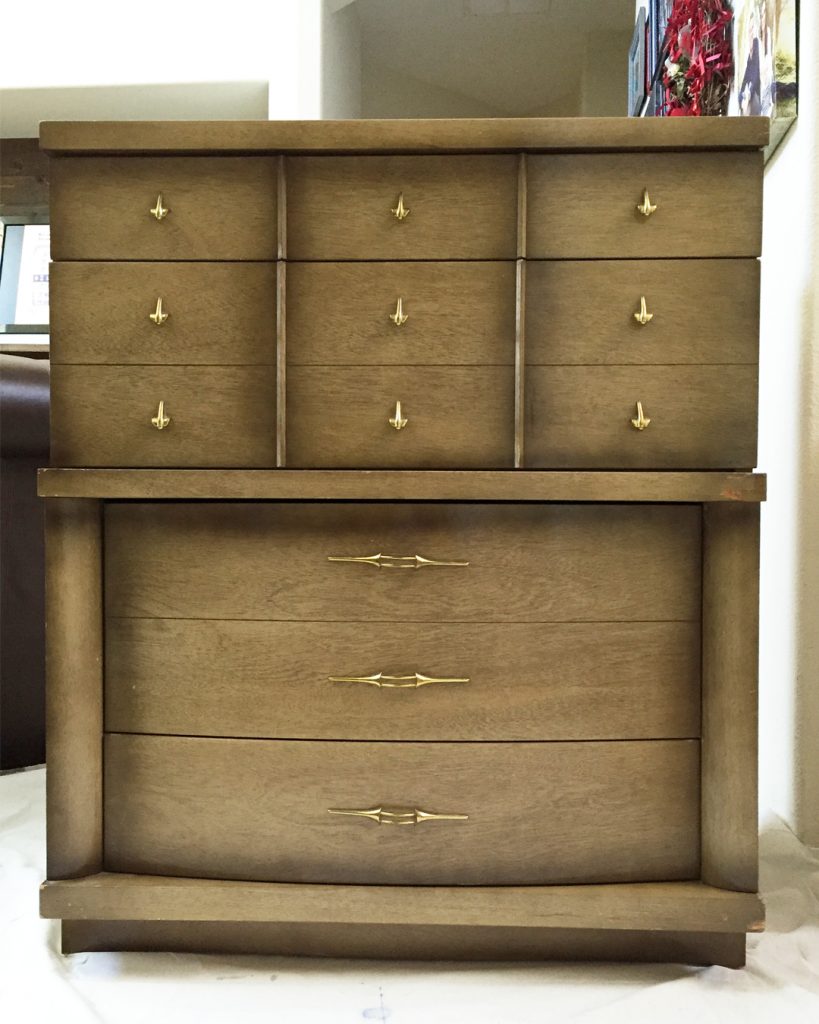
I had very specific makeover plans in mind, but before I could get started, I enlisted my favorite wood filler for a couple of spots.
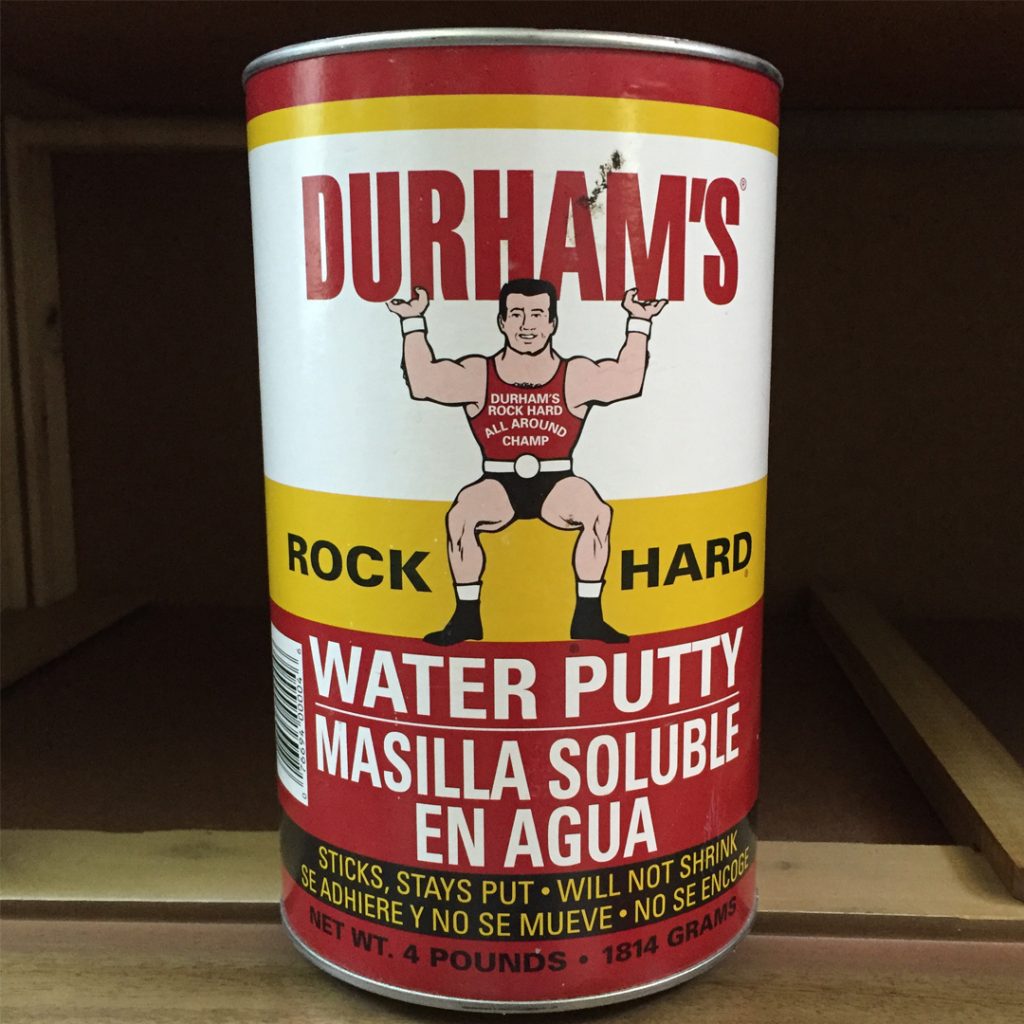
Even though the damage was minimal, I wanted the finished piece to be true to it’s midcentury character—completely smooth, with no distressed or worn areas.
I removed all hardware and gave both the hardware and the dresser a quick clean.
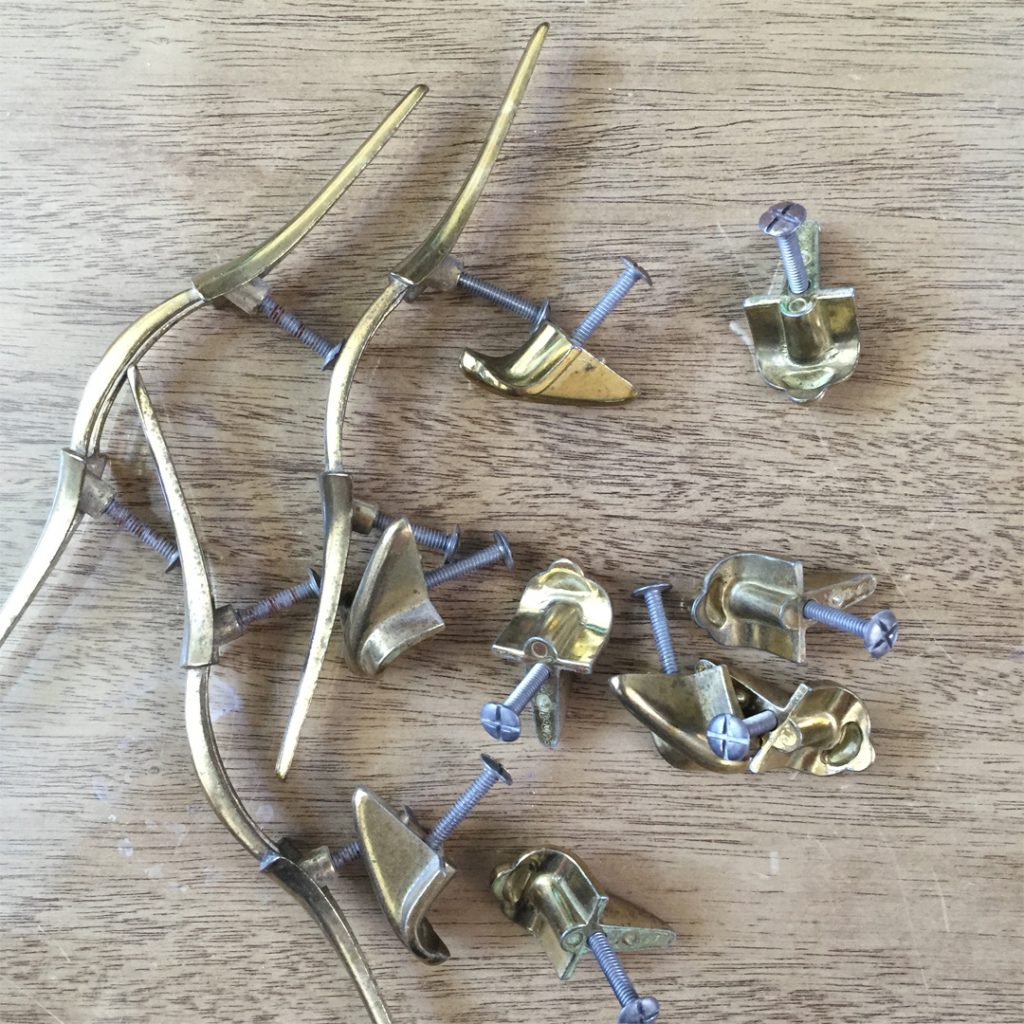
Next, I gave all the drawers a “faux stain” finish using BB Frösch. Get details for the faux stain technique here.
This is my favorite way to achieve the look of stain. Unlike with traditional stain, there is no smell and no mess. It dries incredibly quickly, and I can pick the exact color I want. The biggest reason I used the BB Frösch faux stain technique on this piece??? Traditional stain doesn’t work on laminate, but chalk paint DOES! There wasn’t very much fake grain in the laminate, but there was enough—this technique only works if there is at least a little bit of grain, or at least the look of grain, to show through.
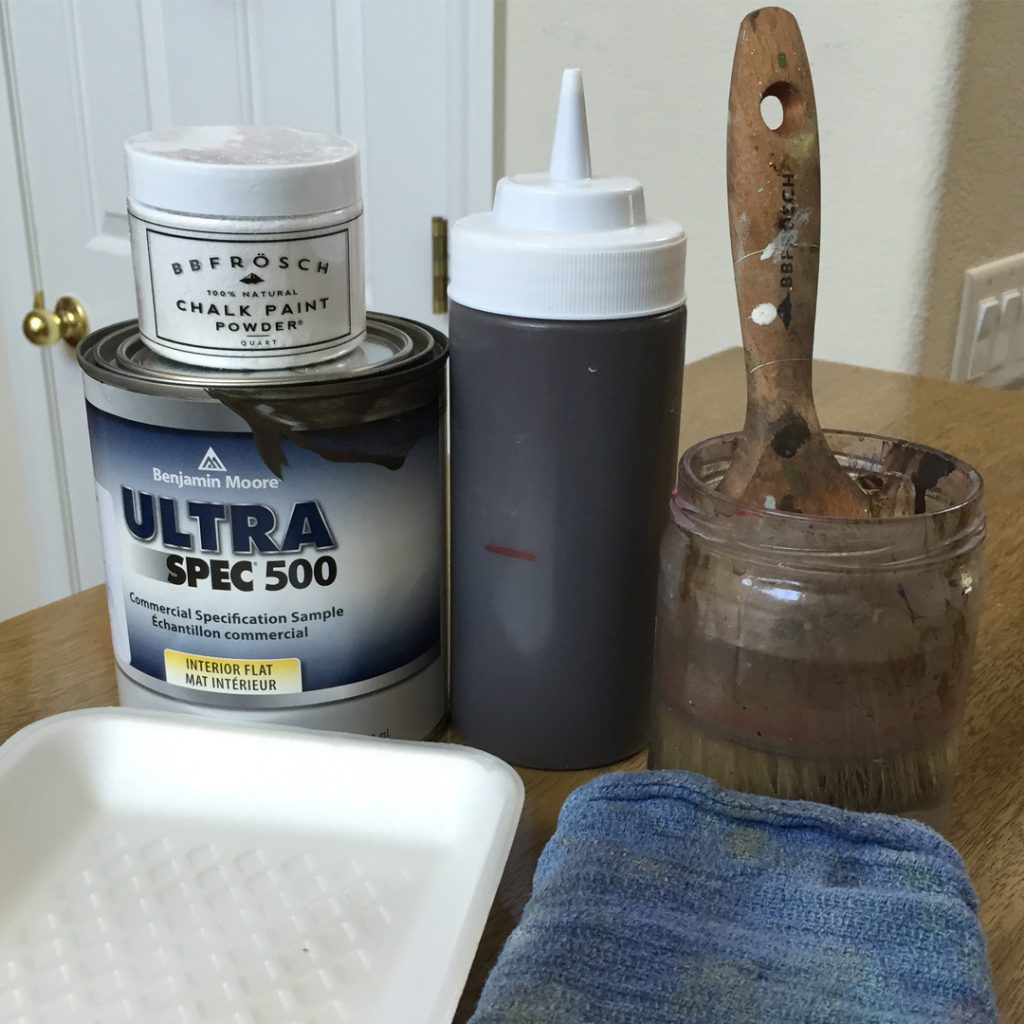
I used Benjamin Moore “Mink” mixed with BB Frösch Chalk Paint Powder to create the faux stain on the drawers only. I decided to “stain” the sides of the drawers as well, even though I don’t always paint drawer sides.
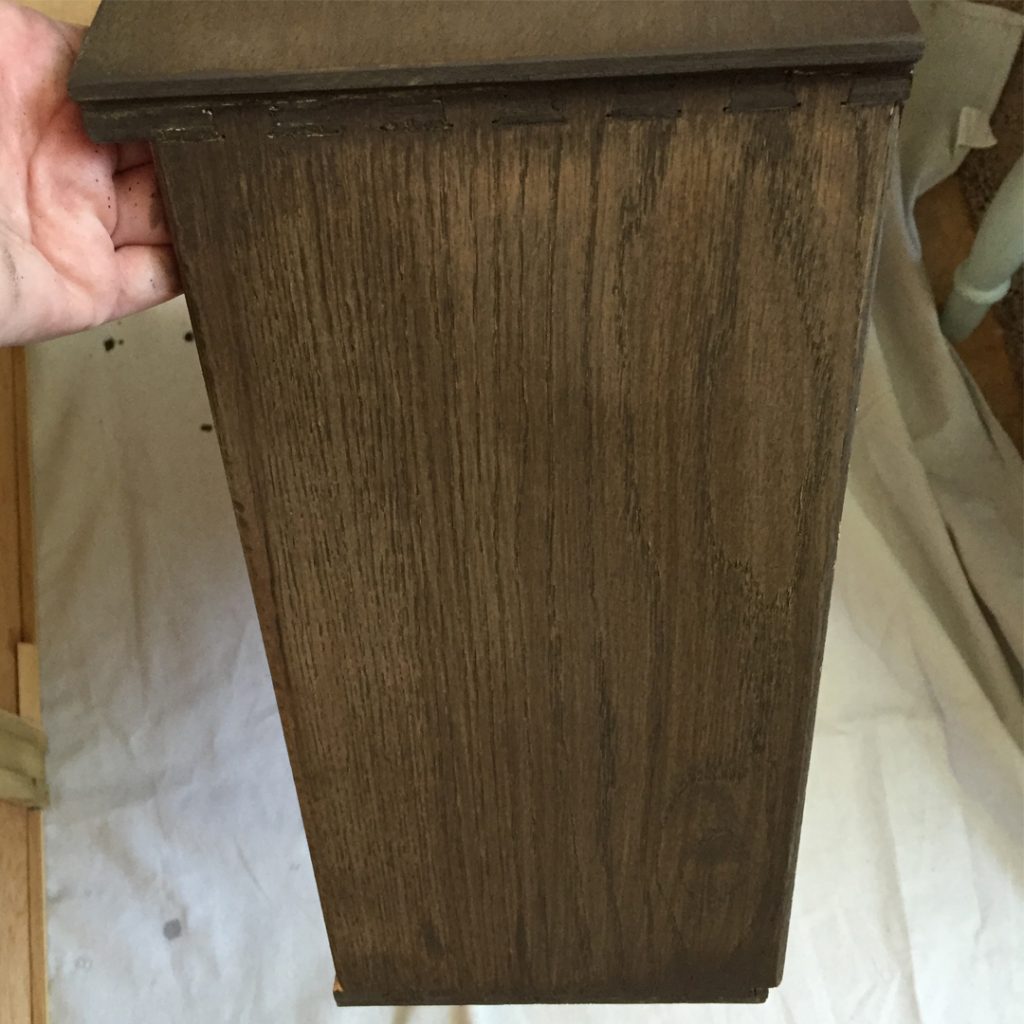
I sealed the drawers with Dark BB Frösch Premium Finishing Wax. I love how rich the dark wax makes a faux stain look!
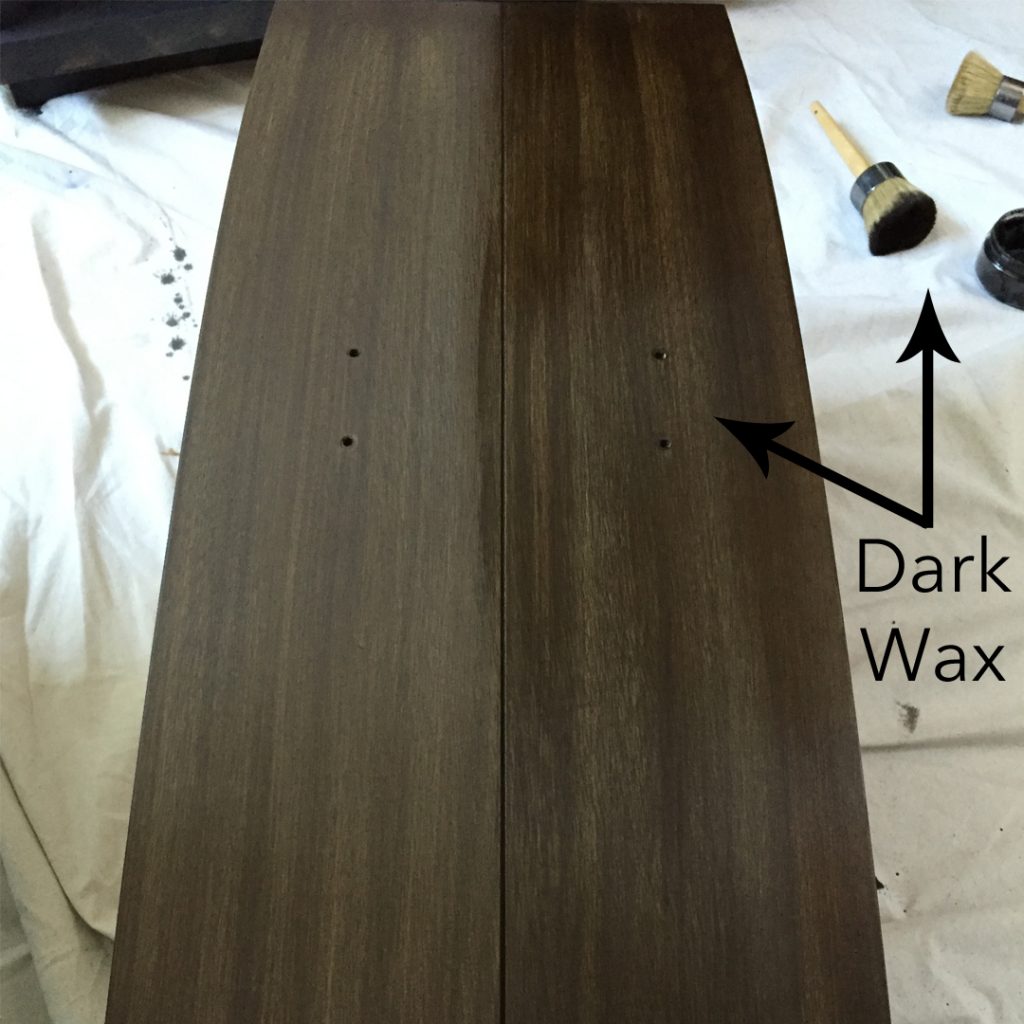
With the drawers painted and sealed, it was time to paint the main dresser. I mixed BB Frösch Chalk Paint Powder with Benjamin Moore “Hale Navy” to create chalk paint.
This is extremely important!
You will NOT have the necessary bonding you need for laminate if you do not use chalk paint. One of the benefits of making your own chalk paint with BB Frösch is, you can adjust how much powder you use, which is nice for non-porous surfaces. For laminate, I use 3 heaping Tbs of powder (instead of 2) for every 8 oz. paint. I mixed 8 oz. (1 C) for this project, but I only used about 3/4 of what I mixed.
Extra bonus! BB Frösch does not alter your paint color in any way! When you mix with navy, you get navy!
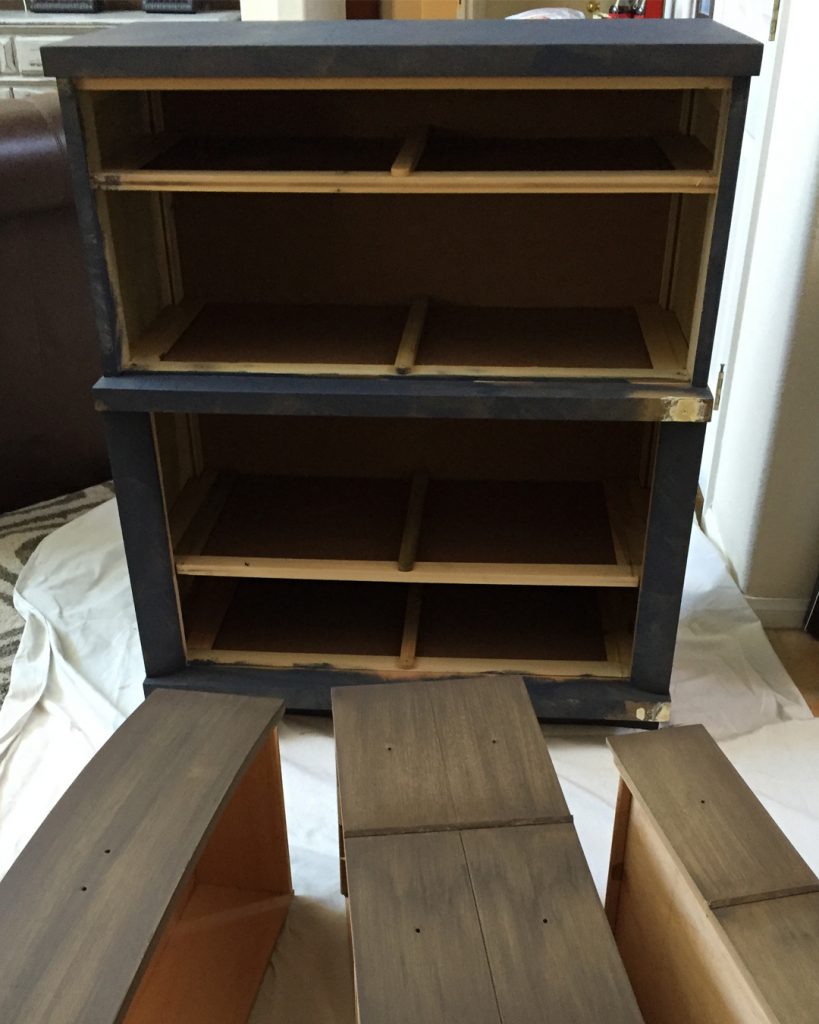
HERE IS THE SECRET TO CHALK PAINTING LAMINATE!
For the first coat:
- Aim for light coverage, not full coverage. This is your bonding coat. You are just giving subsequent coats a little something to bond to.
- Use “hashtag” strokes–this promotes the self-leveling properties of chalk paint. I also recommend a specialty chalk paint brush with natural, chisel-tipped bristles to fully achieve the self-leveling. This is the brush I use.
- Do not overwork your brush or you will lift the paint you have already applied.
- Allow your paint to fully cure before applying second coat. Although your paint will dry quickly, it takes about a day to cure. You will be less likely to lift your first coat when applying your second if your paint has not only dried, but cured as well.
It doesn’t look like much, but trust me, if you follow these rules for painting laminate, your second coat will be amazing!
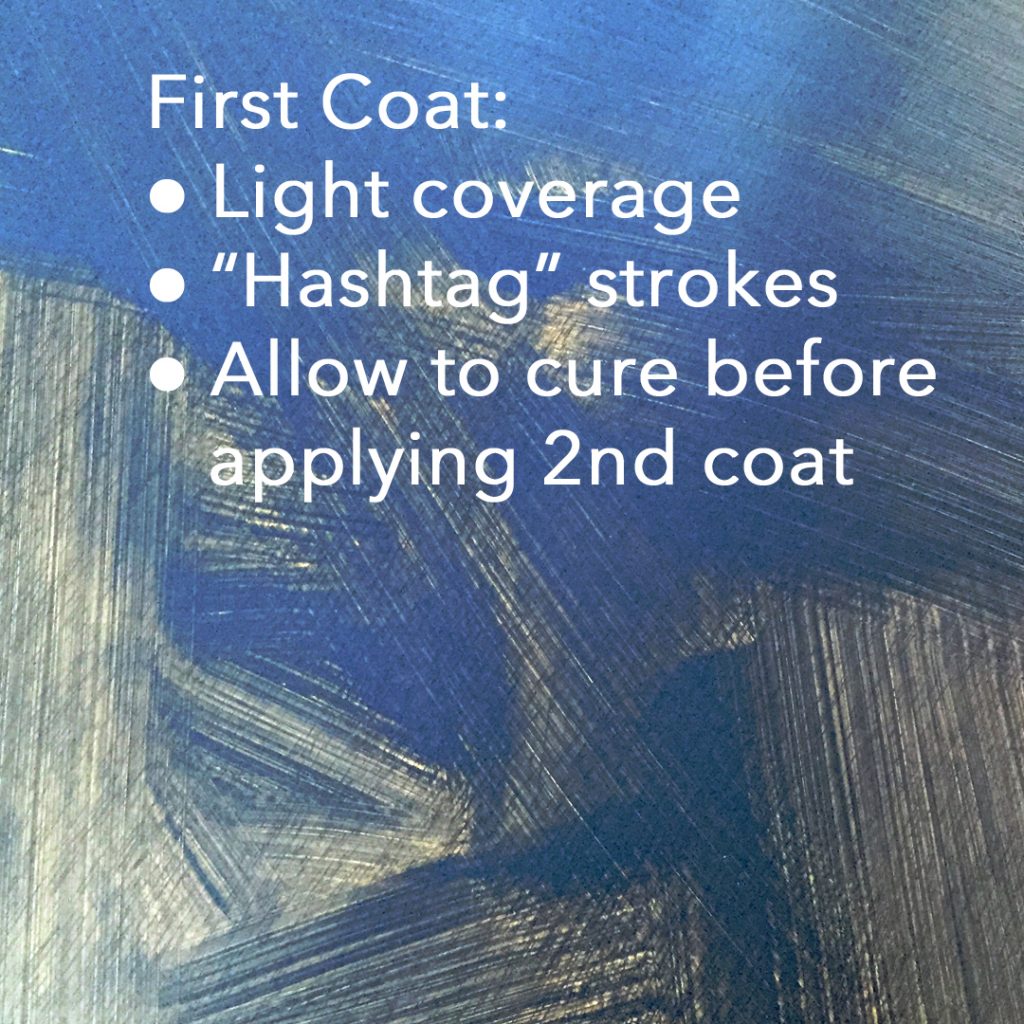
I only needed two coats of navy for this piece. For a midcentury piece, that should have a smooth non-distressed finish, I like to apply the second coat with a brush that has been “kissed” with water before loading paint. You can also apply BB Frösch with a sprayer. My favorite is the Homeright Finishmax.
As soon as the second coat was dry, I smoothed the surface very gently with 400 grit sandpaper.This step helps your piece feel as smooth and awesome as it looks.
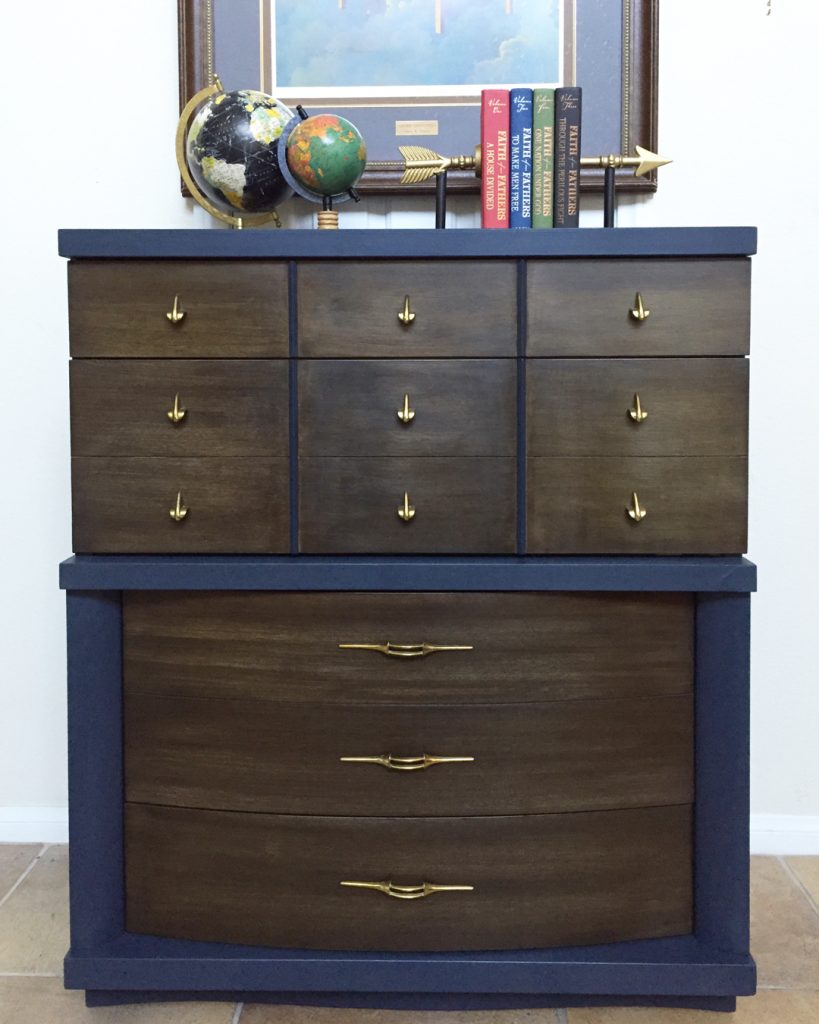
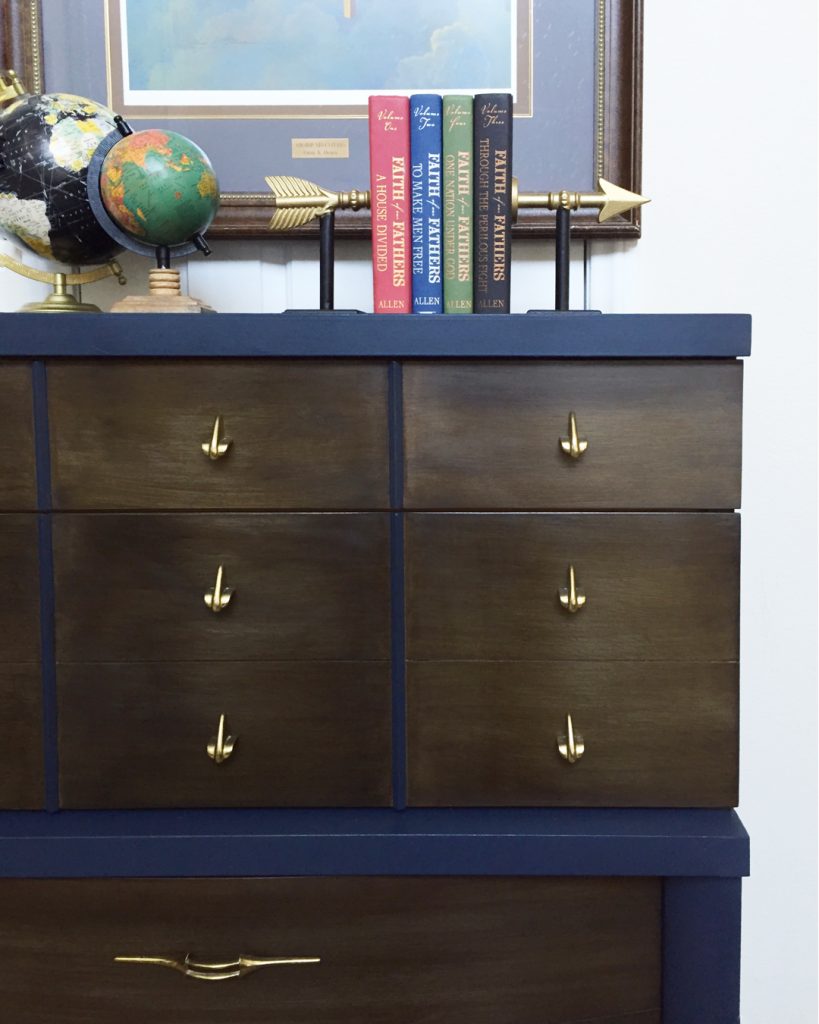
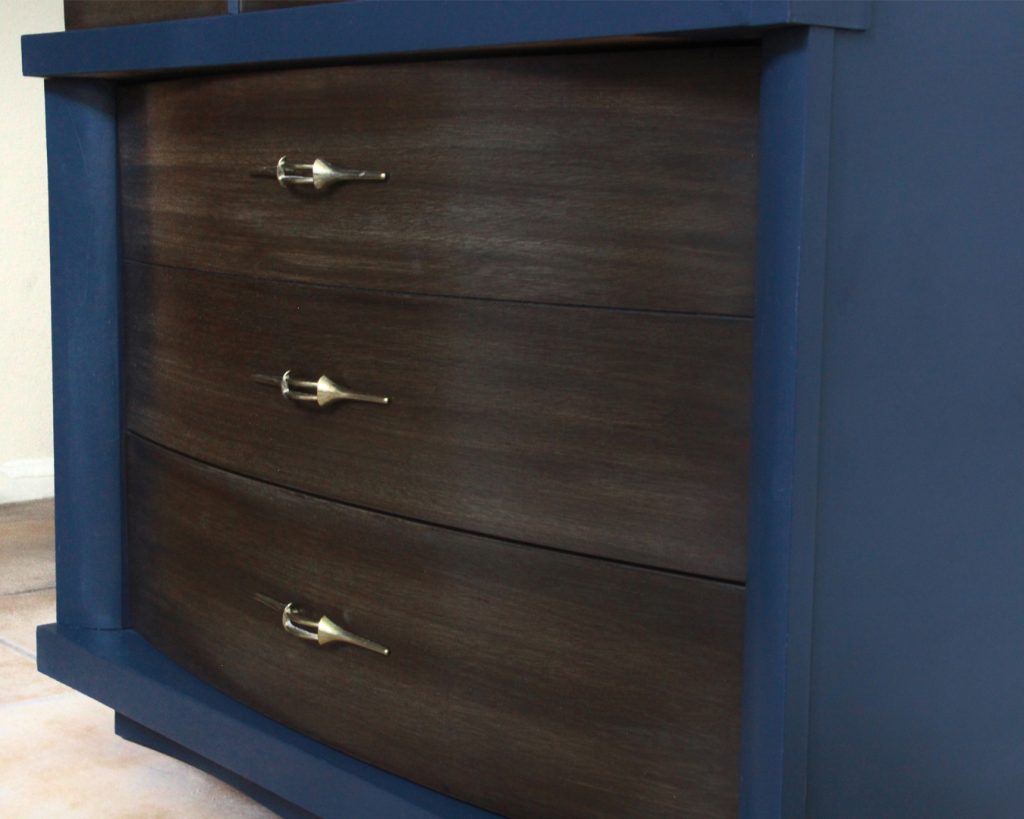
Now I just need to decide whether I want this guy in front of the white wall or the brick wall…
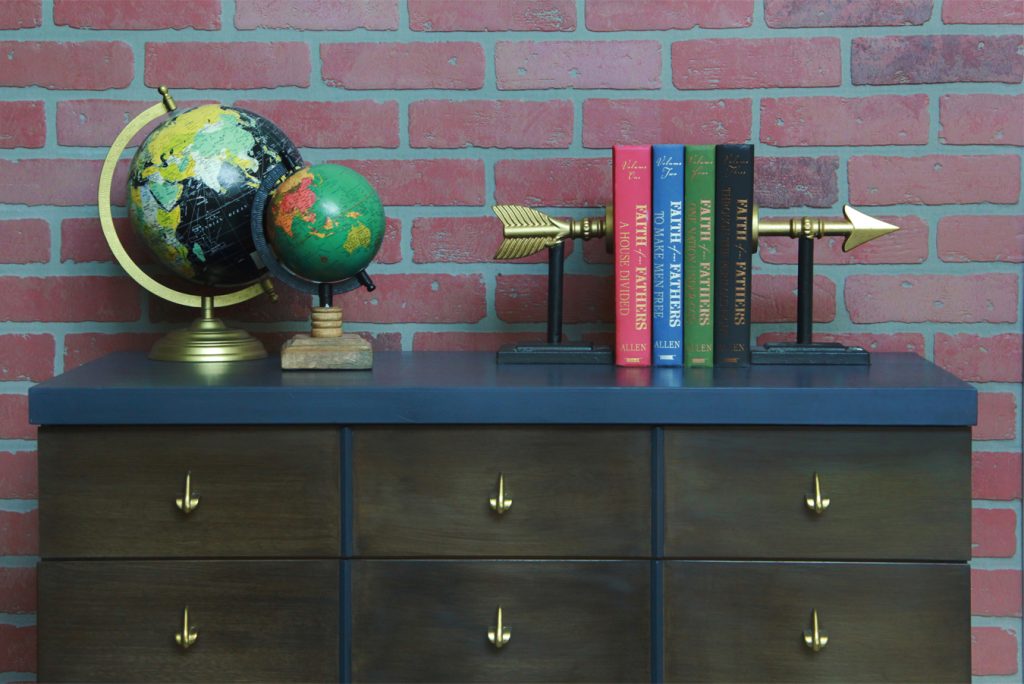
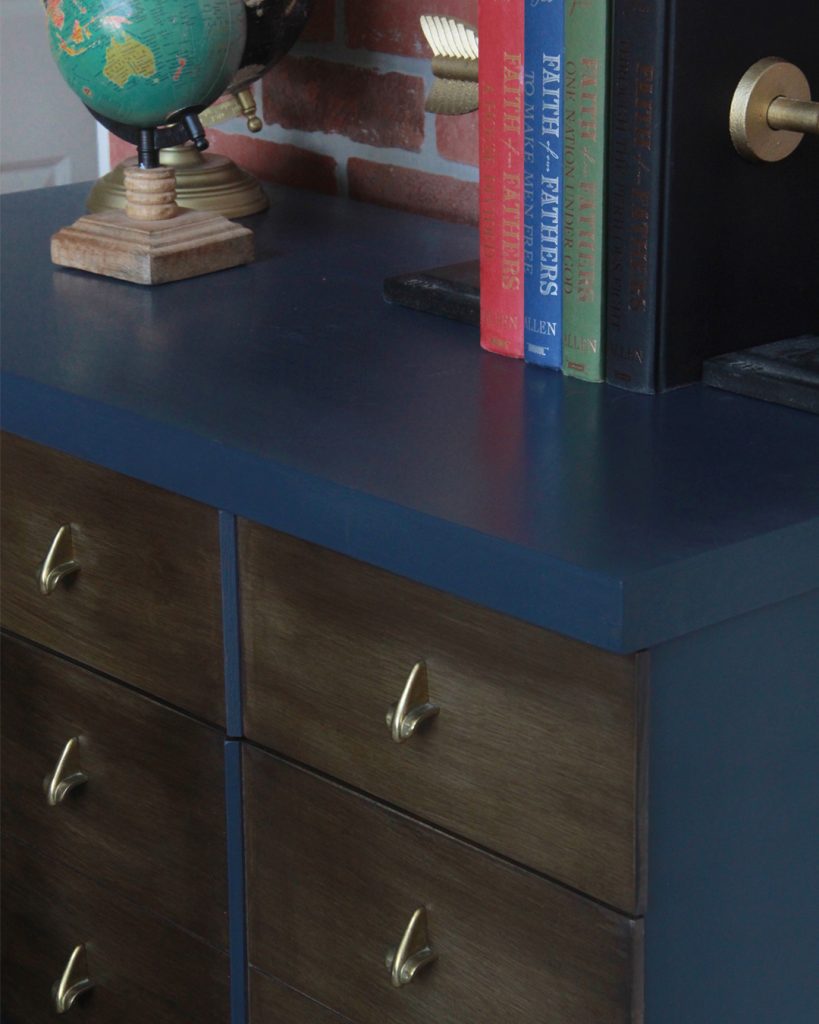
Pretty dramatic transformation for such a quick and easy project!
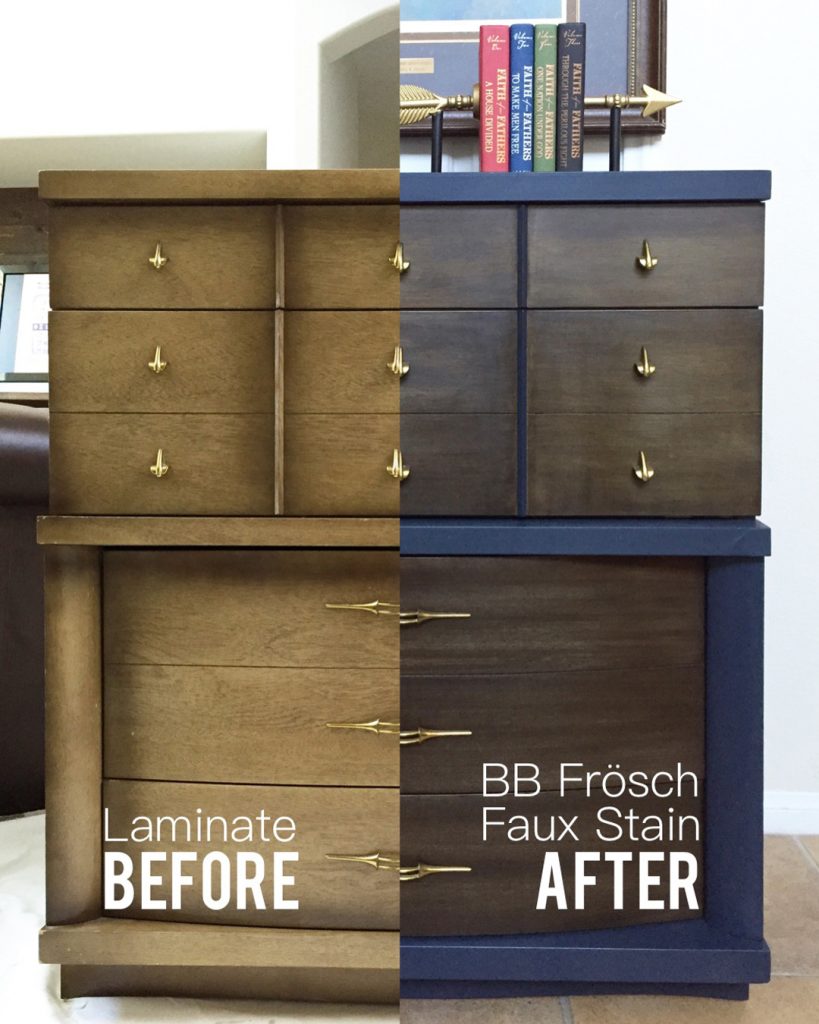
Need more affordable chalk paint inspiration? Follow BB Frösch on Instagram, Pinterest and Facebook.
You can also sign up for a full online BB Frösch Periscope Workshop here!
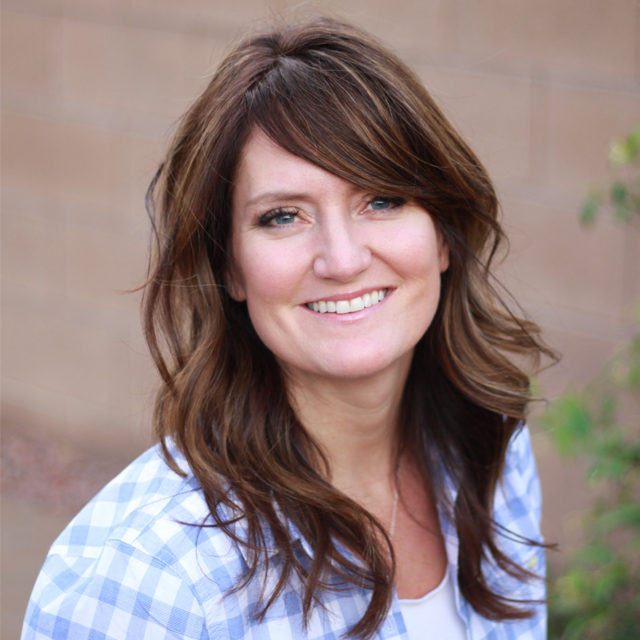

Get, great ideas for laminate! Did you sand the laminate at all before hadhtagging it? I have a French proverbial dresser with wood and what ‘seems’ like laminate. The top is this slick material that I can only guess to be laminate, but under that is solid wood. The drawer fronts also have that laminate feel, but everything else is solid wood. Any suggestions? I sanded the wood areas, but these laminate areas are odd. What do you suggest? Thanks!
Jeanette–I did not sand before painting this laminate, but scuffing your surface a bit with coarse-grit sandpaper will aid in bonding. Also, I recommend adding a little additional BB Frösch Chalk Paint Powder to your paint to aid in bonding.